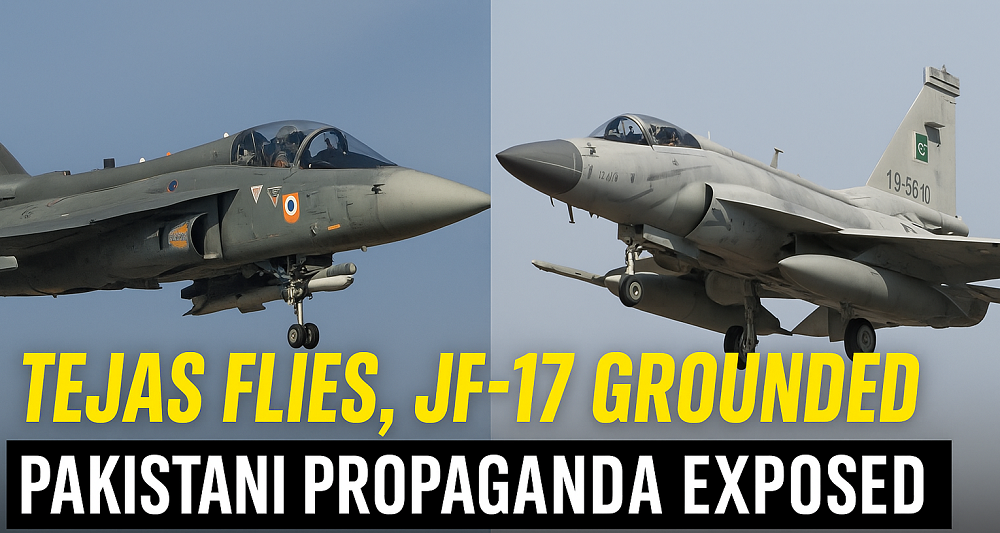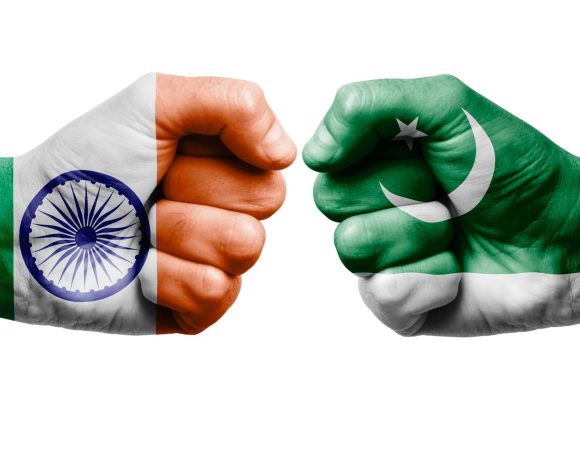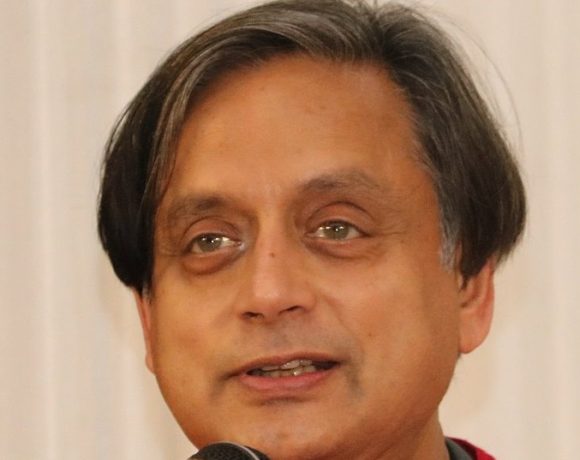
Pakistan Mocked Tejas While Its Own JF-17 Sat Grounded: The Hypocrisy Is Now an International Embarrassment
The Dubai Airshow 2025 has inadvertently delivered a masterclass in propaganda versus reality, and Pakistan has walked straight into its own trap. For two days, Pakistani social media warriors gleefully circulated self-invented tales of a non-existent Tejas oil leak, spinning dramatic narratives about “Indian humiliation” and “technical collapse.” But when the smoke cleared, one inconvenient detail emerged from the official FCCC-approved flying program. The only fighter jet missing from the flying schedule was not Tejas. It was Pakistan’s pride project, the JF-17 Block III.
While Tejas and the Surya Kiran team delivered clean, controlled, fully approved aerial displays, Pakistan’s JF-17 was nowhere to be found. Not in the schedule. Not in the sky. Not in the remarks section. Not in the backup plan. Simply absent like a student who never showed up for the exam but still boasts about topping the class.
The official sheet lists fifteen aircraft performing on Day 3. Rafale. Sukhoi-57. A350. Mirage 2000-9. Surya Kiran. F-16 (US and UAE). Even COMAC, JOBY, and Baltic Bees made their appearance. But JF-17, Pakistan’s much marketed, much advertised, much bragged-about Block III, vanished completely from the flying roster. If this is not evidence of grounding due to technical reasons, then perhaps Islamabad must enlighten the world about a mysterious new category of stealth, where the aircraft is so advanced that it becomes invisible not only in combat but also in official schedules.
Meanwhile, Tejas did exactly what a modern, reliable, well engineered fighter is expected to do. It showed up. It flew. It executed precision aerobatics. It did not appear with cancellation remarks. It did not get replaced. It did not disappear into the footnotes. The Surya Kiran team, which conducts formation flying that requires perfect mechanical fitness and absolute safety clearance, also flew a full 30 minute display. That alone destroys the false narrative that “India was embarrassed and forced to ground its jets.”
But Pakistani propaganda mills are nothing if not consistent. They invented a Tejas failure to distract from their own jet’s non participation. They fabricated an oil leak because the truth, that JF-17 Block III was facing its own technical issues, would have been too humiliating to admit. They launched memes about Tejas while silently hoping no one would notice that their aircraft did not fly at all.
This is the same JF-17 lineage that has repeatedly drawn attention for structural cracks, engine reliability concerns, and grounding cycles across multiple air forces. Block III was advertised as the ultimate upgrade that would solve Pakistan’s aviation woes. But if an international airshow is any indicator of readiness, Pakistan’s showpiece fighter failed before it even left the tarmac.
The irony is delicious. The country that mocked Tejas for imagined flaws is the same country that could not get its own aircraft off the ground. The nation that accused India of stage managing a cover up is the same nation that literally removed its fighter from the official flying chart. The air force that boasts loudly about being combat ready could not even be airshow ready.
This is not about India versus Pakistan in the usual political theatre. This is about facts. This is about official documents. This is about performance. And on every measurable metric, Tejas proved itself. JF-17 did not. The world witnessed it. The aviation community witnessed it. Even Dubai’s Flying Control Committee, whose signatures appear on the official sheet, witnessed it.
Pakistan’s social media may continue spinning fantasies for domestic consumption, but the Dubai Airshow left behind a simple, unavoidable truth. Tejas walked the talk. JF-17 did not walk, did not taxi, and certainly did not fly. A country may mock its neighbour to save face, but an aircraft cannot hide from scrutiny. In the sky, competence cannot be faked. And in Dubai, only one of the two jets ever reached the sky.


















